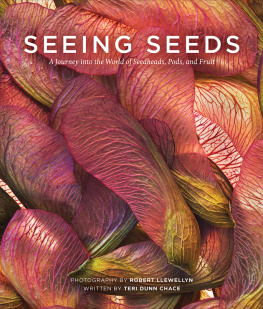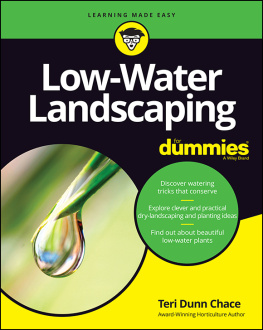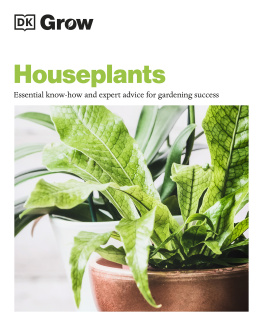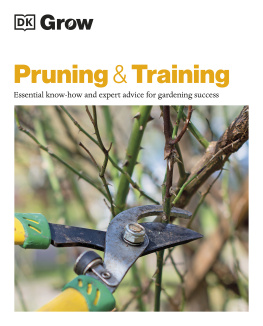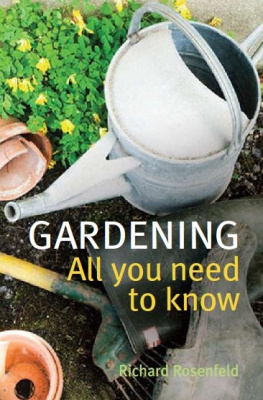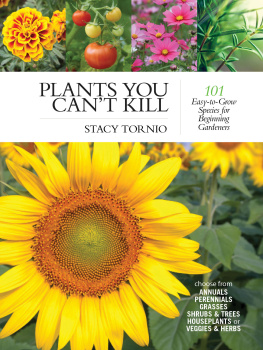THE ANXIOUS GARDENERS BOOK OF ANSWERS
THE ANXIOUS GARDENERS BOOK OF ANSWERS
TERI DUNN CHACE
ILLUSTRATIONS BY COLLEEN COOVER

Copyright 2012 by Teri Dunn Chace. All rights reserved.
Illustrations 2012 by Colleen Coover
Published in 2012 by Timber Press, Inc.
The Haseltine Building
133 S.W. Second Avenue, Suite 450
Portland, Oregon 97204-3527
timberpress.com
2 The Quadrant
135 Salusbury Road
London NW6 6RJ
timberpress.co.uk
Printed in the United States of America
Library of Congress Cataloging-in-Publication Data
Dunn Chace, Teri.
The anxious gardeners guide/Teri Dunn Chace; illustrations by Colleen Coover.
p. cm.
Includes bibliographical references and index.
ISBN 978-1-60469-236-5
1. Gardening. I. Coover, Colleen. II. Title.
SB450.97.D86 2012
635dc23 2011027108
A catalog record for this book is also available from the British Library.
Heartfelt thanks to Tom Fischer, Roger B. Swain, Kathleen Pyle, Alan Chace, Wes and Tristan Dunn, Barbara and Heru Lamb-Hall, Elizabeth Golding, Rosemary Blau and Linda Christie, Larry Levinger, Sarah Rutledge Gorman, and Cassandra Wilson.
Dedicated to my gardening mentor, the late W. C. (Bill) Frase, who always advised me to be thorough, constant, neat, and patientgood advice for gardening, book writing, and living!
CONTENTS
introduction

Welcome to the uncertain, exciting, fraught, gratifying world of gardening. Whether you are a complete newbie or have enjoyed some success in your yard and are now expanding your ambitions, the fact remains that its a wide-open field. Theres so much to do and so much to learn. So many plants, so many choices, so many creative ideas. So many gardening books, magazines, catalogs, websites, and chat rooms.
We live in an age of exploding information. The upside is obvious: you can look up almost anything you might want to knowabout plants; about techniques and projects and design schemes; about care and coping with pests and diseases and harvesting. The downside is also apparent: so much information can be downright overwhelming. What if you discover facts that contradict each other or dont match what you observe in your own yard?
First, thank you and congratulations for buying this book. A book remains arguably the best way to educate yourself quietly and contemplatively, at your own pace. You can thumb through and pause where something catches your interest, refer to the table of contents, or browse the index. You can set it down and return later, when you know more or your questions are clearer. The information here is deliberately brief and pragmatic, so you wont feel like youre drinking it through a fire hose.
Let me also add that because everyone is so busy nowadays, I emphasize sensible and efficient tactics and advice that save time and heartache. And because there is an ever-growing interest inand, to be frank, an urgent need forgardening practices that are organic and have a low impact on the environment, youll find that themeas well. My goal is to help you become a more efficient, savvier gardener, while having fun along the way. Thats how it should be.
For most of us, the days are gone when older, more experienced gardeners mentored young or new ones. The loss of this continuum of practical and inspirational help is a grievous one indeed. The gentle or bossy instructions and advice of your gardening grandmother or nurturing neighbor were valuable precisely because they were not overwhelming. They knew what they were talking about because they had once been in your shoesgaping at the disease-ridden rosebush leaves, wondering why the peony wasnt blooming, or ruing the weeds. They understood your worries, answered your questions, and passed on their gardening wisdom in calm and concise tones.
Calm? You know that oops or uh-oh sinking feeling, but you may not even trust yourself, never mind navigating your way to answers you can trust. Something in your garden has gone awry for some unknown reason, or you could have done this or that differentlyright? Todays smaller yards and decks or patio container-based gardens mean there is a narrower margin of error. You dont want to screw up what little gardening space you have. You wantbeautiful, productive, healthy displays. You dont want to ruin everything.
Relax. As your gardening grandmother and nurturing neighbor might have told you if they were here now: plants are fairly forgiving. They want to live. Everything will be all right. Mistakes can almost always be corrected, or you can learn good lessons from your errors. Dear anxious gardener: please relax, regroup, learn as you goand enjoy your garden.
HOW TO USE THIS BOOK
Start with the table of contents. Individual chapters address the most common garden topics in alphabetical order, and within them, the most frequent garden mistakes or oh, no moments. Likely you will recognize familiar issues, situations, and questions and can get some help and reassurance. You will pick up ideas and information that show how prevention is key, and you will become a better steward of your home landscape and a better gardener going forward. To use this as a reference book, consult the detailed index, which can send you directly to plants, problems, or projects of specific or immediate interest.
Be patient as you browse, and feel free to read several entries on topics that concern you and your garden. A broader picture should emerge: Most mistakes are not disasters, and it is within your power to right a gardening wrong.
It is my fervent hope that the nuggets of information and wisdom I share will lead you to feel less worried. You may be inclined or compelled to continue your education or search for further information (even returning to the overwhelming Internet), but do yourself and your garden a favor and walk that path. Walk, dont run. Your garden will prosper under the care of a more patient gardener who is now confident that everything will be all right.
BULBS
GET A HANDLE ON BULB SUCCESSBEFORE, DURING, AND AFTER THE DISPLAY.

Planting bulbs upside-down
While you would never put a living plant into the ground upside-down, you might make this somewhat embarrassing, but all-too-common, mistake if youve never planted bulbs or are planting a kind thats new to you. After all, bulbs are dormant, and there are no stems, foliage, or crisp white roots to clearly clue you in to which end is up. If there is a pointy end, you might guess the roots will eventually emerge from thereand, alas, you will be wrong. For the vast majority of bulbs, from tulips to wee snowdrops, the pointy end is up.
THE RIGHT WAY TO DO IT Growth is most efficient when you plant a bulb roots down and growing end up. In the case of most popular bulbs, this is generally easy to see. Like a store-bought onion, the top (where all new growth will emerge) is pointy, and the bottomthe basal plateis flat or flattish. If the orientation is not immediately obvious, such as with some crocuses or ranunculus, peer at each bulb more carefully and you should be able to figure it out. Sometimes youll even spot tiny dried roots adhering to the basal plate.
Next page

